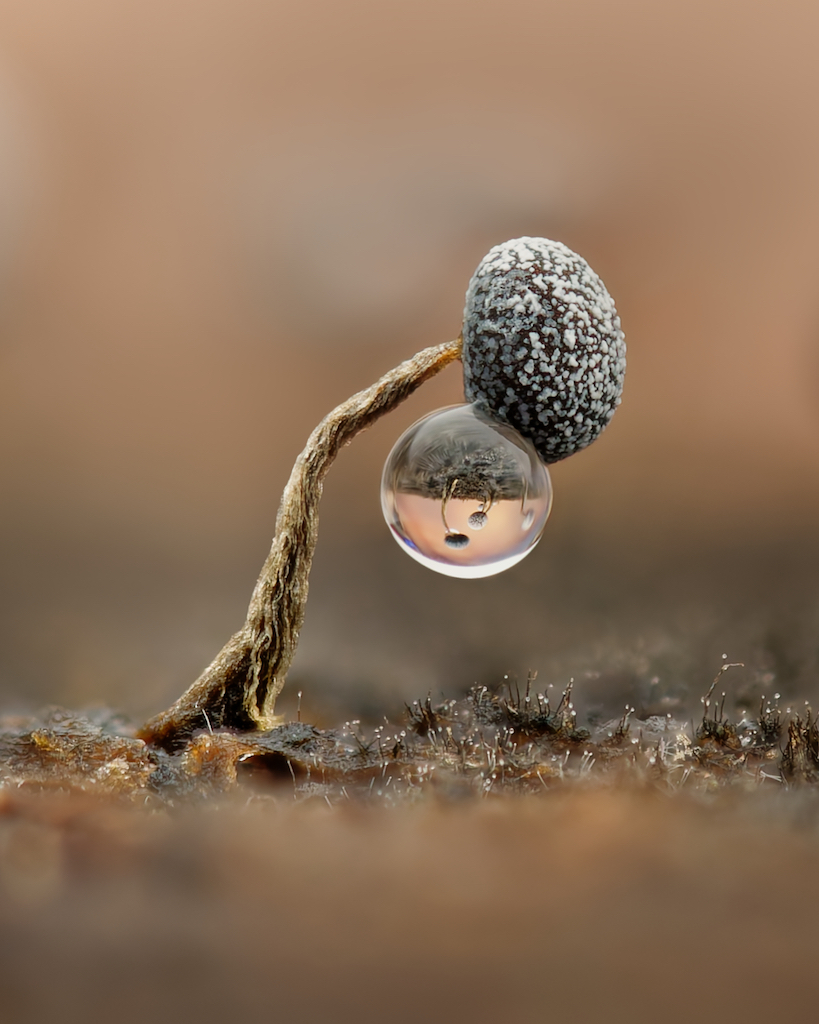iPhone 16 Pro Max close-up shot beats full-frame camera rivals in Photographer of the Year contest
Let's take a look at the winners of Close-up Photographer of the Year, discuss why more MPs are not always better, and explore the gear and the stories behind the success
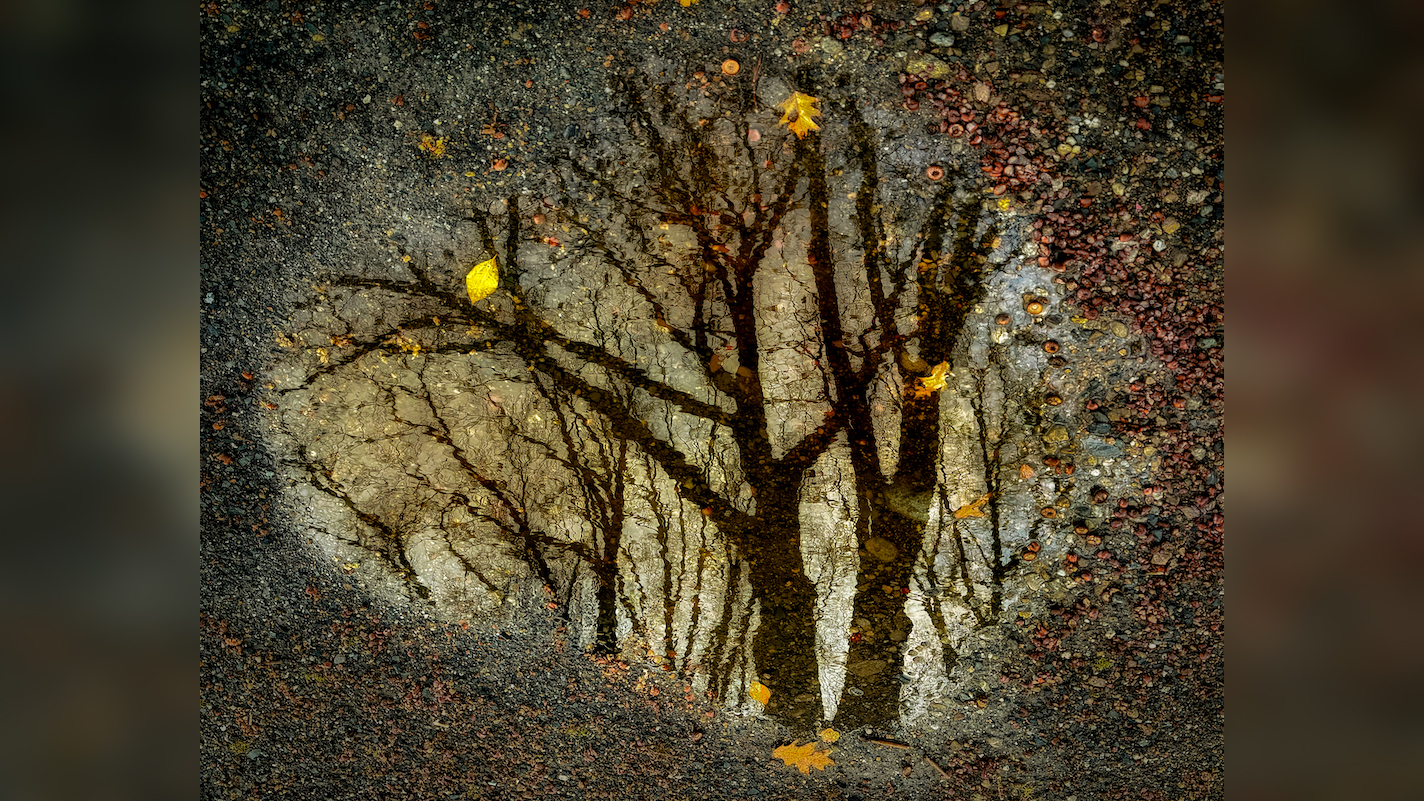
The winning images of this year's Close-up Photographer of the Year (CUPOTY) competition, themed 'Something Beautiful', were announced.
American photographer Linda Repasky has been awarded the CUPOTY title for her image 'Puddle Reflection', shot on an iPhone 16 Max Pro. In addition to winning a £300 cash prize, Linda's work emphasizes that one does not need high-end camera equipment to create award-winning photography.
Pro photographers often say that while you can invest in the most expensive and most up-to-date gear, you can't buy the talent to discover and capture captivating scenes – how true!
And this year's CUPOTY winner strongly demonstrates this point, outshining images taken with higher megapixel sensors and even full-frame cameras like the Sony A1. (Just as a comparison, the iPhone 16 Max Pro features a 48MP sensor for its main, 24mm equivalent lens while the Sony A7 full-frame camera features a stacked back-illuminated CMOS Exmor RS sensor with 50.1 effective megapixels!)
Especially in the close-up genre, this award-winning outcome might surprise some, as people often think that larger sensors with more megapixels are 'better' for capturing subjects, particularly when it comes to displaying subjects above their life-size.
While more megapixels can mean that more details get captured, the pocket-sized smartphone technology should not be underestimated. Next to the technical developments in recent years, the power of this device is that you always have it with you, and it allows you to encounter different perspectives on everyday subjects with quality.
"Linda’s picture of an autumn puddle taken with an iPhone is proof that you don’t need exotic locations or specialist equipment to capture something beautiful. By looking closely at the pavement she has revealed textures, colours and details that many of us would simply walk past. It’s a reminder to slow down and appreciate the beauty in the everyday," highlighted Tracy Calder, Co-founder of CUPOTY.
The best camera deals, reviews, product advice, and unmissable photography news, direct to your inbox!
Let’s take a closer look at Linda Repasky's winning image, along with the other photographs selected by the judges for the winner's gallery.
The top three
Winner: Puddle Reflection by Linda Repasky (American)
"In late autumn, after the leaves have fallen from the trees, the landscape shuts down and heads toward slumber. But in this tiny puddle, the reflection of a bare tree comes alive with soft colours amid a scattering of acorns and pebbles. Puddles, so ordinary and humble, and so easily overlooked, are a source of endless beauty and magic!"
Tech info
Camera: iPhone 16 Pro Max
Lens: iPhone native 1x lens (24mm)
ISO: 64, Aperture: f/1.78, Shutter speed: 1/120sec
2nd Place: At The Hub by Michael Friel (Irish)
"These tiny spiders appear for a short time during autumn. When the forecast promises a sunny day, I visit to an ornamental tree nursery in Jinju, South Korea, in the early morning and search for horizontal webs strung across upper branches at chest height.
"As the sun rises, I point the lens roughly east. When I see the rainbow refractions along the web strands (often helped by a light wind), I fire away. The spider poses proudly, never moving."
Tech info
Camera: Nikon D500
Lens: Nikon AF-S 105mm f/2.8 G IF ED VR Micro
ISO: 400, Aperture: f/6, Shutter speed: 1/400sec
3rd Place: Slime Moulds and Reflections by Kamilla Szava-Oberndorfer (Austria)
"During a walk in the woods near Vienna, Austria, I found a group of Physarum sp. on a dead branch, lying on the woodland floor. On closer inspection, I spotted water droplets on some of the fruiting bodies.
"Due to their size (1–2mm) it was a challenge to find one with an interesting reflection. I managed to get a series of shots using the focus bracketing feature on my camera. This image is a result of 26 shots stacked in Helicon Focus."
Tech info
Camera: Olympus OM-1
Lens: Olympus M.Zuiko Digital ED 90mm f/3.5 Macro IS PRO
ISO: 250, Aperture: f/7.1, Shutter speed: 1/50sec
Accessories: Tripod, flash and diffuser
Finalists
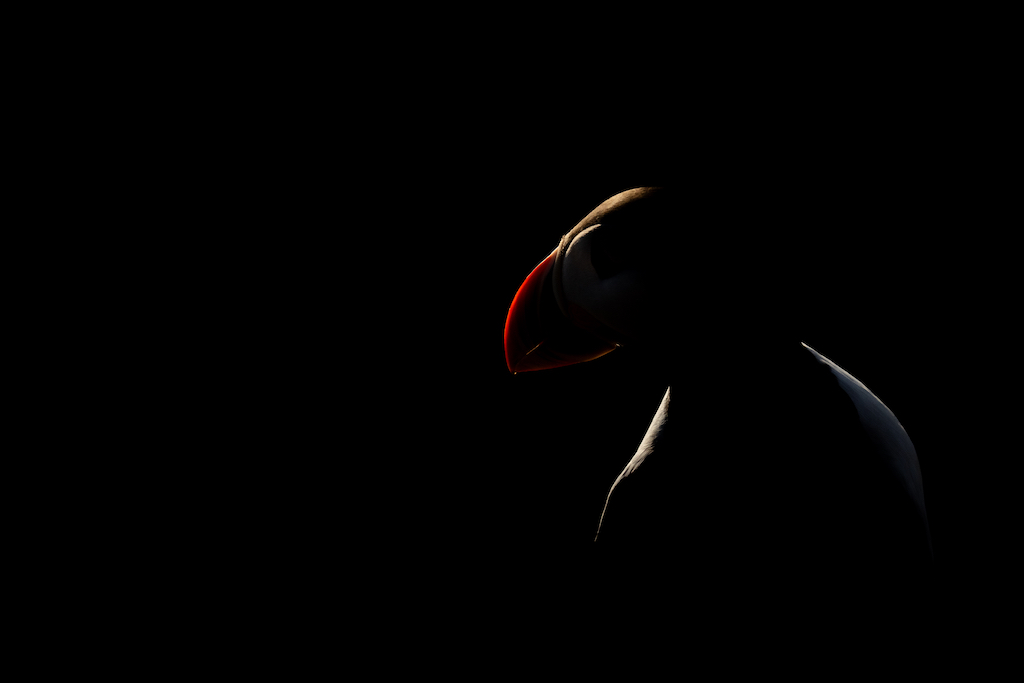
Puffin Profile by Alex Pansier (Dutch)
"An Atlantic puffin stands out in a low-light setting, with its colourful beak gently illuminated against a dark background. The rim of light outlining its beak and chest really appeals to me as it brings out the bird’s unique features and creates a quiet, mysterious mood. The contrast between the lit beak and the shadows adds a touch of elegance to the scene."
Tech info
Camera: Sony A1
Lens: Sony FE 400mm f/2.8 GM OSS
ISO: 640, Aperture: f/9, Shutter speed: 1/1000sec
Accessories: 1.4x teleconverter
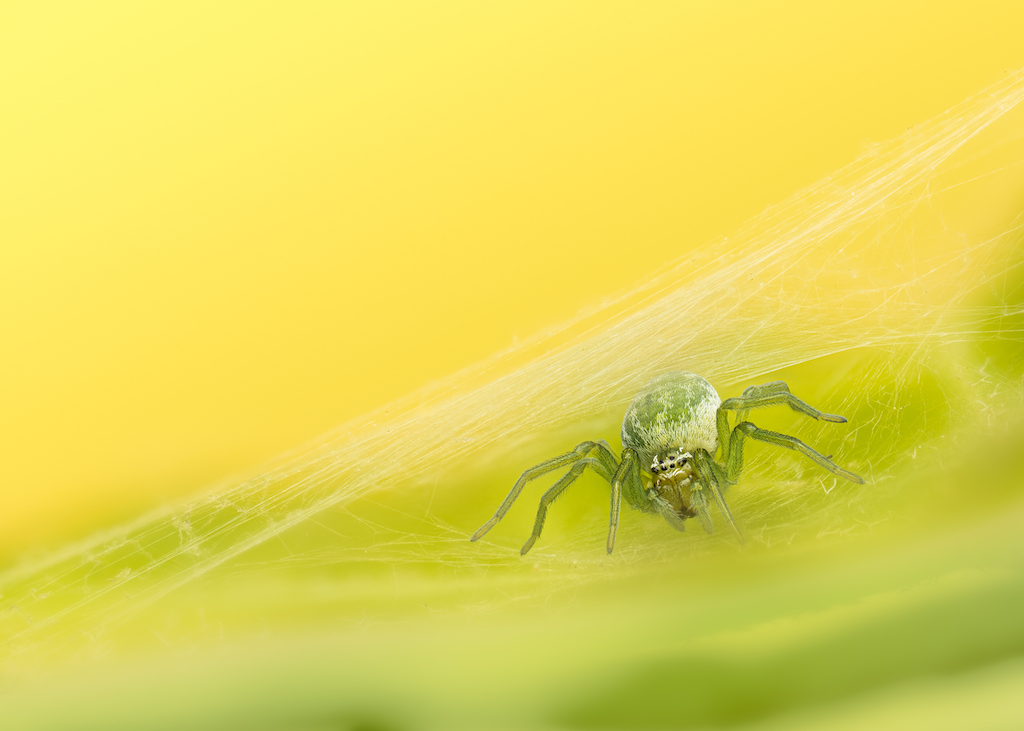
Green Meshweaver by Ryan Dale (British)
"I had seen a few Green Meshweaver spiders on ivy leaves while I was gardening, and I just had to get a photograph of one. After a few unsuccessful attempts, I noticed this individual hiding in its web retreat.
"Seeing an opportunity to capture a behavioural shot of the species, I carefully set up my camera and tripod so as not to disturb the spider. Its tiny size meant that each gust of wind ruined the shot, so I sat patiently until the air was still and then I quickly fired off a stack, finally achieving the picture I had in mind."
Tech info
Camera: OM System OM-1 Mark II
Lens: OM System M.Zuiko Digital ED 90mm f/3.5 Macro IS PRO
ISO: 100, Aperture: f/5.6, Shutter speed: 1/50sec
Accessories: Godox V860III flash, Cygnustech Diffuser, tripod
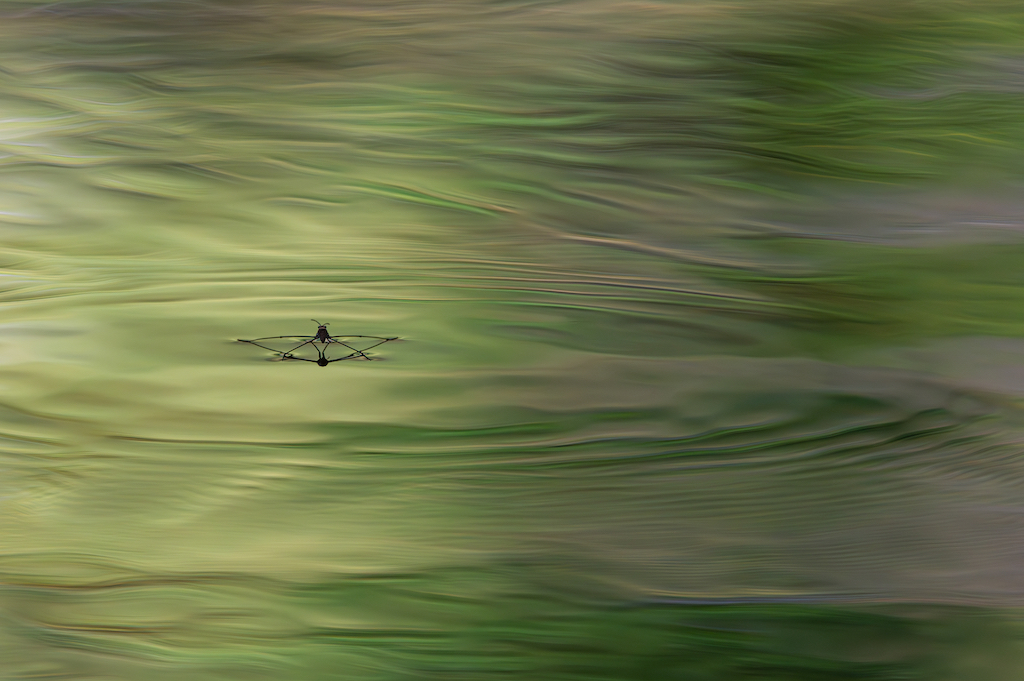
Miracle by Yann Raulet (French)
"In my floating hide on the Lirou – a small river in the south of France near Montpellier – I patiently waited for a kingfisher to land in front of my lens. Sadly, it didn't happen. To pass the time, I started photographing ripples in the water. In the viewfinder, my eye got lost in this moving, colourful spectacle. Suddenly, a common pond skater joined the dance. For him, walking on water wasn't a miracle, but for me the scene was pure magic."
Tech info
Camera: Nikon Z6 II
Lens: Sigma 150-600mm f/5-6.3 DG OS HSM
ISO: 4500, Aperture: f/10, Shutter speed: 1/800sec
Accessories: Homemade floating hide with integrated tripod ball head
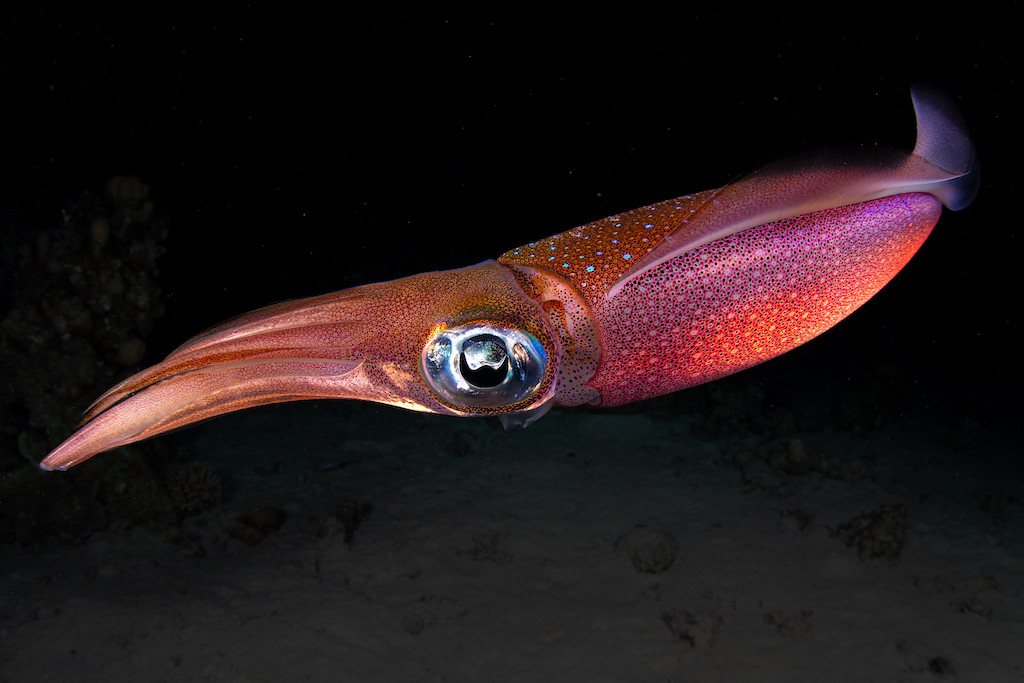
Squid on the Run by Alessandro Grasso (Italian)
"I was on a night dive in the Red Sea at Marsa Alam, Egypt, when I suddenly noticed a squid right in front of me. As I approached (with extreme caution) it sped away, only giving me the chance to take two shots. Thankfully, it was enough."
Tech info
Camera: Canon 5D Mark IV
Lens: Sigma 15mm f/2.8 EX DG Diagonal-Fisheye
ISO: 160, Aperture: f/13, Shutter speed: 1/125sec
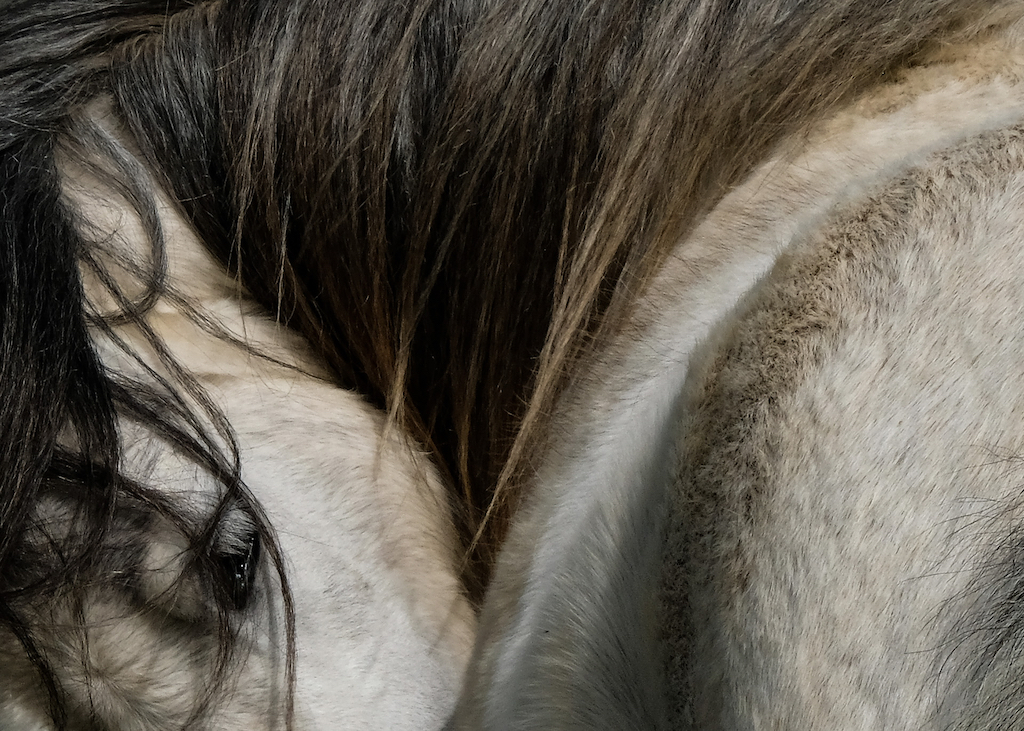
Wild Welsh Pony by Richard Sambrook (British)
"I came across a herd of wild ponies in the Preseli Hills of Wales. Although wild, they were curious about people, and I was able to photograph them individually from about a metre away. It was magical to be surrounded and apparently accepted by this wild herd.
"I was struck by the colouring of one pony and when it bent round and ducked its head, I grabbed what was an unpromising shot from the rear. Reviewing it later I realised that by cropping in I could create a more intimate, almost abstract, image which better captured the moment."
Tech info
Camera: Fujifilm X-Pro 2
Lens: Fujifilm XF 18-55mm f/2.8-4
ISO: 640, Aperture: f/18, Shutter speed: 1/640sec
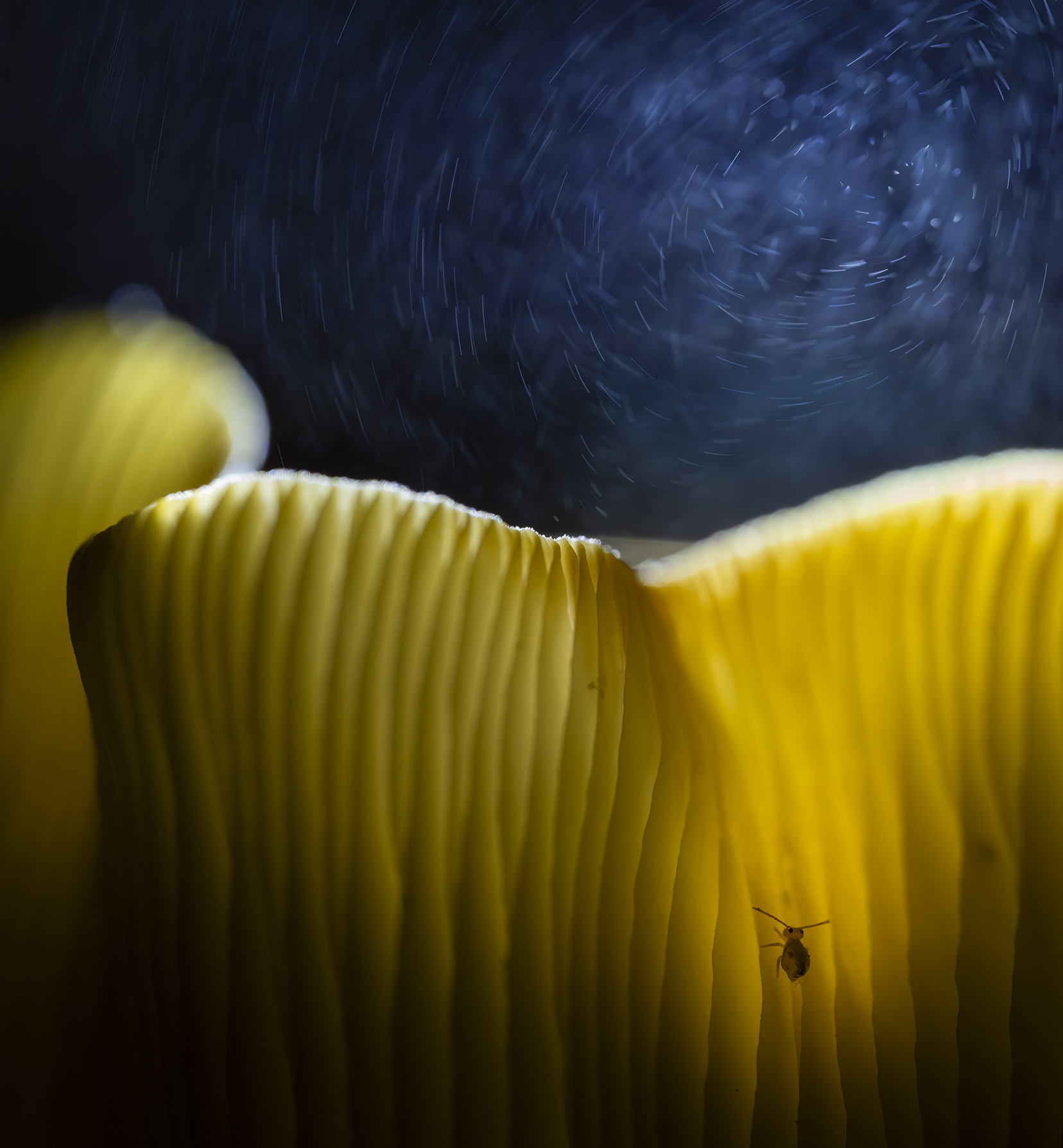
In the Shelter of the Mushroom by Tibor Litauszki (Hungarian)
"A globular springtail climbs along the edge of a mushroom in an autumn forest in Germany. I had originally set out to photograph spore-releasing mushrooms, but it wasn’t a successful trip.
"However, through the macro lens, I noticed a globular springtail only 3.5mm in size, appear before my camera. As I tried to capture the image and moved closer to the mushroom, my breath in the cold air created an interesting effect with the backlighting."
Tech Info
Camera: Canon EOS R5
Lens: Laowa 100mm f/2.8 CA Dreamer Macro
ISO: 1250, Aperture: f/5.6, Shutter speed: 1/320sec
Accessories: Beanbag, LED lamp
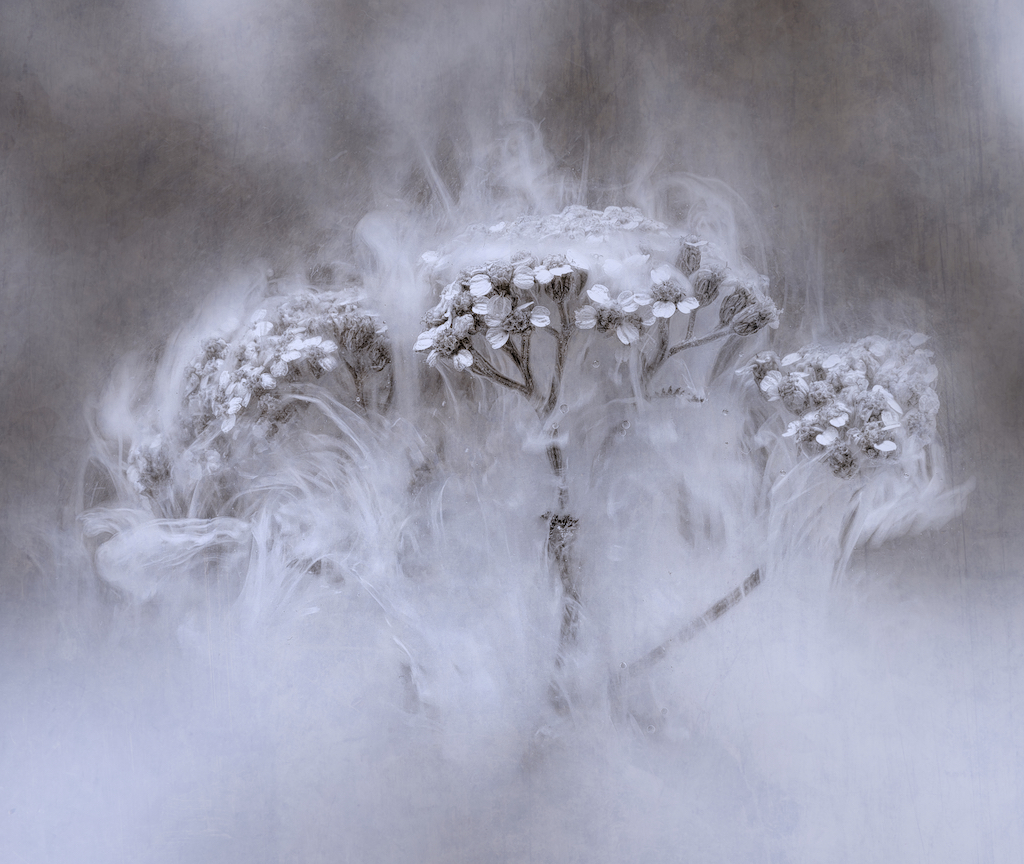
Deluge by Noelle Bennett (New Zealand)
"I love the form of achillea flowers, whether they’re alive or dead. In this case, I took a flower that was in full bloom and submerged it in a container of cold water, anchoring it to the bottom with a weighted crocodile clip. I placed the container and flower inside a foldable light studio then set my camera on a tripod, making sure I had my cable release attached.
"I then carefully dripped evaporated milk into the container above the flower using a pipette, before releasing the shutter. I had the camera set to burst mode and carried on shooting until all the evaporated milk had sunk to the base of the tank. I really like the drama this technique adds to such a pretty, but somewhat overlooked, flower."
Tech info
Camera: Panasonic Lumix DC-G9
Lens: Leica DG Macro Elmarit 45mm f/2.8
ISO: 100, Aperture: f/14, Shutter speed: 0.625
Accessories: Tripod, cable release, 40cm foldable LED ring light studio, pipette, evaporated milk, 4.3L clear container, weighted crocodile clip, coloured card for background.
Post-processing: Basic adjustments in Affinity Photo, removed air bubbles and small particles from the evaporated milk. Topaz Studio 2 for clarity, sharpness, and a blue/cream colour shift. Layer, mask and texture in Affinity Photo.
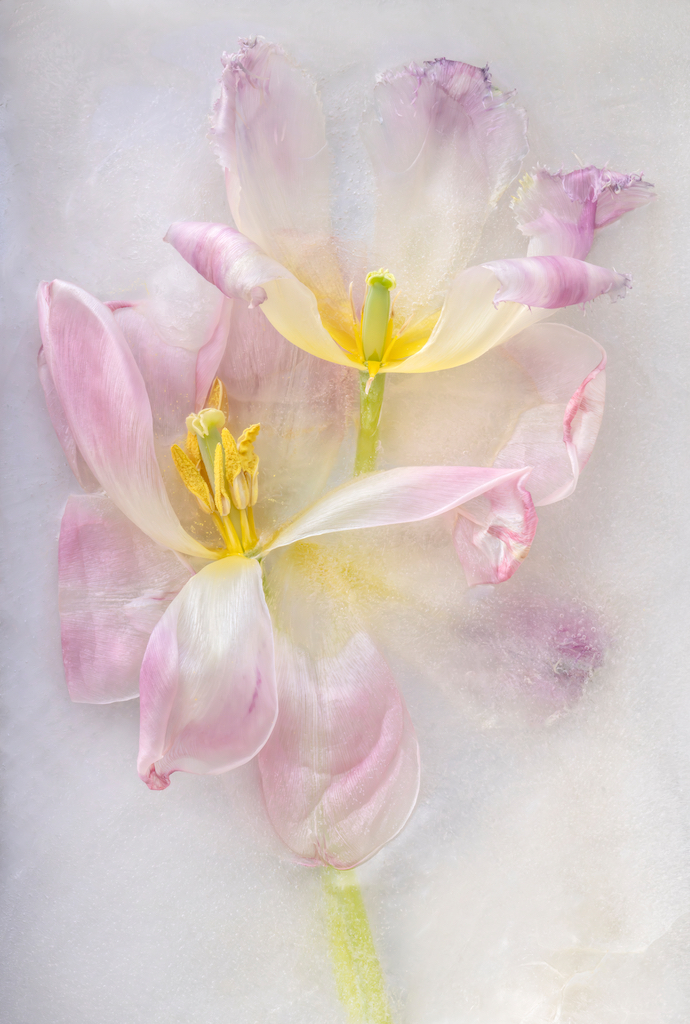
Tulip Gift In Ice by Kathleen Clemons (American)
"A friend of mine had surprised me with a bouquet of tulips, and I had photographed them at the height of their beauty in different ways. As the flowers aged and the petals unfurled, I decided to see how they would freeze (some flowers lose their colour during this process).
"I arranged the tulips in a shallow baking pan with a small amount of water to anchor them. I added more water when that base layer had frozen, choosing to leave some petals above the water line. I love the contrasting textures."
Tech info
Camera: Canon EOS R5
Lens: Canon EF 180mm f/3.5L Macro
ISO: 2500, Aperture: f/22, Shutter speed: 1/100sec
Post-processing: Nik Viveza

Kim is a photographer, editor and writer with work published internationally. She holds a Master's degree in Photography and Media and was formerly Technique Editor at Digital Photographer, focusing on the art and science of photography. Blending technical expertise with visual insight, Kim explores photography's time-honored yet ever-evolving role in culture. Through her features, tutorials, and gear reviews, she aims to encourage readers to explore the medium more deeply and embrace its full creative potential.
You must confirm your public display name before commenting
Please logout and then login again, you will then be prompted to enter your display name.


